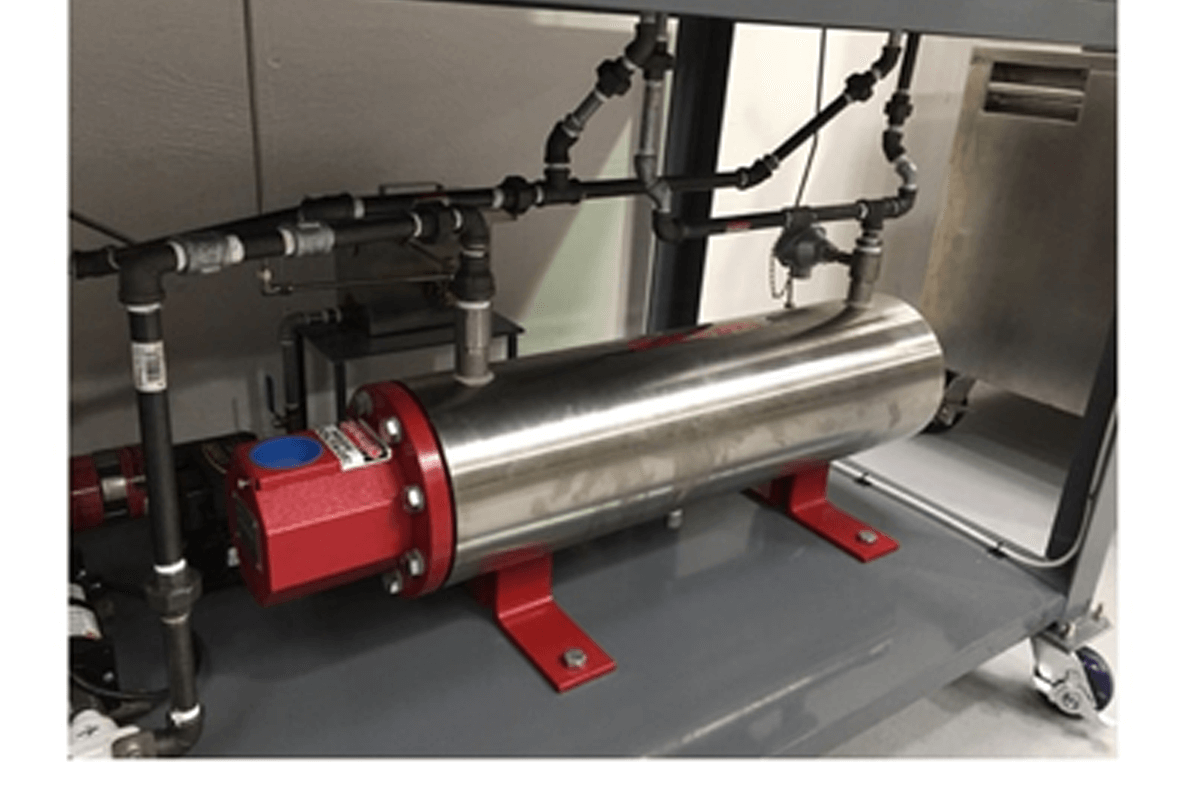When should we use Inline Heaters?
Last updated on February 2nd, 2024 at 10:29 pm
 Inline heaters (generally referred to as circulation heaters) consist of a flanged immersion heater contained within an insulated steel vessel. The name is derived from the orientation of the flanged heater, which is positioned parallel to—and aligned with—the steel housing. In the process heating industry inline heaters heat circulating fluids such as oil, water, and high temperature gases.
Inline heaters (generally referred to as circulation heaters) consist of a flanged immersion heater contained within an insulated steel vessel. The name is derived from the orientation of the flanged heater, which is positioned parallel to—and aligned with—the steel housing. In the process heating industry inline heaters heat circulating fluids such as oil, water, and high temperature gases.
The popularity of inline heaters attribute their versatility and customization for applications in the process heating industry. Concerning fluids of all different pH levels, viscosity, flow rates, target temperatures, and corrosive properties, the design of each inline heaters is with the specific application in mind. Manufacturers can tailor the size, watt density, and construction of the flanged heater to meet specific needs. For example, for water and low-viscosity liquids, inline heaters typically use a sheath made of brass or steel. Oils and low-pressure steam, on the other hand, have sheaths made from Incoloy®. The watt density of the heater is customizable for the application, with higher watt density elements available for lighter liquids.
Inline heaters offer a number of advantages over traditional tank heaters. With the target fluid pumping through the system, fluid is constantly circulating rather than sitting stagnant in a vat. Further, inline heaters are compact, easy to install, and easy to maintain compared to larger heated fluid storage tanks. Most importantly, energy consumption typically reduces as their is virtually no heat loss in inline heaters. Finally, the use of electric inline heaters affords the user precise temperature control; options for digital temperature displays and electronic controls offer excellent visibility of the heating process.
Choosing Inline Heater Specifications
 A company in Arkansas sought the expertise of Wattco engineers when they needed a heating system for large hydraulic oil tanks. The closed loop system needed a high limit controller to ensure the tank remained at a safe operating temperature. Additionally, the large system needed to be portable and resistant to inclement weather. Wattco’s solution was a design consisting of two inline heaters with temperature controls that would ensure safe and consistent heating.
A company in Arkansas sought the expertise of Wattco engineers when they needed a heating system for large hydraulic oil tanks. The closed loop system needed a high limit controller to ensure the tank remained at a safe operating temperature. Additionally, the large system needed to be portable and resistant to inclement weather. Wattco’s solution was a design consisting of two inline heaters with temperature controls that would ensure safe and consistent heating.
Thermocouples were installed at critical locations to provide constant signal feedback regarding the tank’s temperature. The skid on which the heaters were mounted was heavy-duty steel, built with mobility in mind while still being capable of resisting the elements. The Electric Heating elements were flanged immersion heaters rated at 500 psi; the heating elements were conveniently installed at locations for easy access in the event of maintenance, repair, or replacement. Wattco backed up the design with a 5 year extended warranty and guaranteed replacement within 72 hours should an immediate repair be necessary.
Wattco stocks a wide range of inline heaters in order to meet the diverse needs of the process heating industry. Furthermore, Wattco offers the expertise to design custom equipment in collaboration with the end user in order to provide suitable equipment for even the most extraordinary cases. With installation assistance, technical support, and multi-year warranties, Wattco inline heaters are among the highest quality products available in today’s market.
